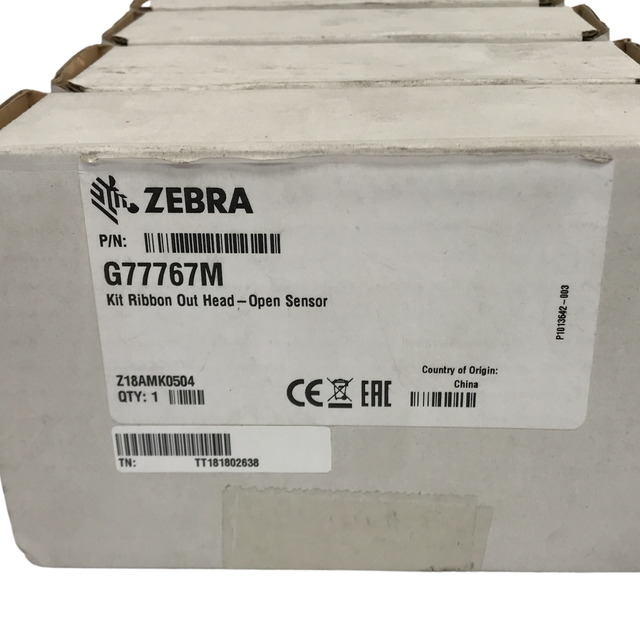

Then, I run a general calibration by hitting pause and selecting the calibrate button. All zebra printers have guides on proper loading technique. I always start with making sure the ribbon and labels are properly fed through the printer along the correct path. If your zebra printer is skipping labels, not feeding an entire label, or giving a paper or ribbon out error, then follow these steps. If ink is transferred, you have the correct side. You can test what side the ink is on by sticking a label to the ribbon. I should also add, if you are not getting an image at all chances are that you have the ribbon loaded backwards. If you still can’t get a good label check if you have the right ribbon to label combination. Print head alignment could also cause feathering at the edges of the label. You can adjust this by fine-tuning the ribbon strip plate. A white line running diagonally signifies a wrinkle in the ribbon. If there is a vertical white line through the print you have a bad print head element and the print head will need (to be) replaced. There is a toggle with spring above the printhead, make sure this is evenly space across the label, or if there is one you want to center it on the label. Another good place to check to increase print quality is that you must have even pressure across the print head. If you’re still not getting a good image check to make sure you have the right ribbon for the label material selected. This is not actually a setting to change how much heat is applied. Too much darkness will melt the ribbon onto the label, your controlling the dwell of the print head. After slowing down the print and you still have a light image, increase the darkness as much as possible.

I recommend taking the speed down as much as possible to ensure that you have the best possible image. The slower the print the better the quality of the print image. How is the quality of the print? Print quality is greatly affected by darkness and speed. It also prints across the entire capable width of the printer which will help you better fine tune your adjustments. Pause test is the best way to quickly determine if the printer is functioning properly. Release pause and you are ready for troubleshooting. This will load 9999 test print labels into the printer. Keep the pause button pressed until all the lights flash once. To do this: turn the printer off, hold in the pause button, and turn the printer back on.
Zebra z4m plus ribbon software#
This sends a test label to the printer and isolates the printing function from the software running a normal print job. Right after I’m done cleaning, I’ll run a pause test print. The external cover is designed to keep the printer clean! It seems like 50% percent of the places I go into run their printers with the cover up all the time. Cuts in the platen will create voids in the print and will need replaced.

Inspect the platen roller (underneath printhead) and make sure there are no cuts in it or labels wrapped around it. We recommend cleaning the printhead, all the rollers, and sensors with 99.7 % isopropyl alcohol every time you change the media. Dust and particles block sensors field of view. Adhesive and residue builds up on the printhead and platen rollers. This seems like common sense, but you’d be surprised by how many printers are neglected until something effects operation. The very first thing I do when troubleshooting zebra thermal printer issues in every situation, no matter what, is to thoroughly clean the entire printer. I am going to walk through some quick Zebra troubleshooting tips and, hopefully, save you some time and frustration when you find that your printer isn’t performing like it should.

These issues carry through to all thermal printer models in the zebra family.
Zebra z4m plus ribbon how to#
TOP 5 Common issues with zebra thermal printers and how to fixĭuring my 20 years of troubleshooting zebra printers, I have found that the same problems arise over and over again. ZEBRA Thermal Printer Troubleshooting Tips and Tricks


 0 kommentar(er)
0 kommentar(er)
